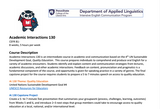
This resource was created by the Intensive English Communication Program (IECP) at Penn State.
- Subject:
- Language Education (ESL)
- Material Type:
- Full Course
- Syllabus
- Author:
- Nikki Mattson
- Date Added:
- 06/14/2023

This resource was created by the Intensive English Communication Program (IECP) at Penn State.

Sustainability lives within the people we know and places we visitThe book consists of two parts: Champions of Sustainability and Sustainable Innovations in Africa. The former focuses on individuals who are renowned for their efforts to further the cause of sustainability in their respective areas of expertise while the latter highlights cities in Africa that face a challenge pertaining to sustainability, and the potential solutions they could implement to solve said crises.
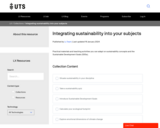
Practical materials and teaching activities you can adapt on sustainability concepts and the Sustainable Development Goals (SDGs).
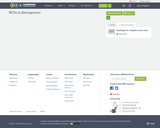
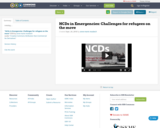
coming.....
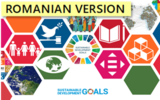
Developed by the World Affairs Council of Seattle, this teaching and learning module provides a series of lessons that engage students in exploring the United Nations Sustainable Development Goals. With 17 goals in total, this ambitious framework targets local and global issues ranging from ensuring quality education for all to mitigating climate change. This set of lessons has student facing materials translated into Romanian. __________Elaborat de Consiliul de Afaceri Mondiale din Seattle, acest modul de predare și învățare oferă o serie de lecții care implică elevii în explorarea Obiectivelor de Dezvoltare Durabilă ale Organizației Națiunilor Unite. Cu un total de 17 obiective, acest cadru ambițios vizează probleme locale și globale, de la asigurarea unei educații de calitate pentru toți la atenuarea schimbărilor climatice.
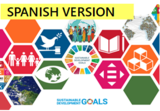
Developed by the World Affairs Council of Seattle, this teaching and learning module provides a series of lessons that engage students in exploring the United Nations Sustainable Development Goals. With 17 goals in total, this ambitious framework targets local and global issues ranging from ensuring quality education for all to mitigating climate change. This set of lessons has student facing materials translated into Spanish. .Desarrollado por el Consejo de Asuntos Mundiales de Seattle, este módulo didáctico proporciona una serie de lecciones que involucran a los estudiantes en la exploración de los Objetivos de Desarrollo Sostenible de las Naciones Unidas. Con un total de 17 objetivos, este marco ambicioso apunta a problemas locales y globales que van desde garantizar una educación de calidad para todos hasta mitigar el cambio climático.
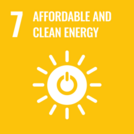
In this lesson from the World Affairs Council - Seattle, students will explore the United Nations Sustainable Development Goal #7: Affordable and Clean Energy. They will learn about efforts to provide universal access to clean and affordable energy across various sectors, identify barriers faced by communities, and understand how sustainable energy policies can lead to positive outcomes. Students will evaluate the impact of specific energy sources on global greenhouse emissions and explore renewable alternatives like wind, solar, and thermal energy. Through interactive activities and analysis of new technologies, students will collaboratively develop proposals for improving access to clean energy. They will gain awareness of initiatives for equitable societies and climate change mitigation, and explain how reliable, affordable clean energy can transform lives globally.
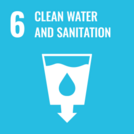
In this lesson from World Affairs Council - Seattle, students will learn about UN Sustainable Development Goal #6: Clean Water and Sanitation. Currently, 2 billion people live in water-stressed communities, and 3.5 billion lack safe sanitation. Students will investigate the causes and effects of unequal access to clean water and sanitation, focusing on the impact on women and children. They will explore current solutions and identify further actions needed. Through research, presentations, discussions, and a community project, students will deepen their understanding, develop problem-solving and collaboration skills, and learn about organizations addressing these issues. The lesson will also highlight the interconnectedness of UN Sustainable Development Goals. Ultimately, students will gain a comprehensive understanding of SDG #6 and the ability to advocate for clean water and sanitation as a fundamental human right.
In this lesson from the World Affairs Council of Seattle - Global Classroom Program, students learn about United Nations Sustainable Development Goal #13: Climate Action. They will examine the causes and consequences of climate change and explore possible courses of action to address the issue. Students will engage in activities to reflect on previous knowledge, develop new learning, and encourage creative and critical thinking.Some of the activities in this lesson include a KWL Chart using Jamboard, a think-pair-share, a cause and effect graphic organizer, and a Flip video. These individual and collaborative learning experiences will help students deepen their understanding of climate change and its impact on communities locally and globally. Through these activities, students will communicate what they have learned about climate change and sustainability and utilize problem-solving skills to generate tangible solutions.
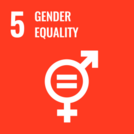
In this lesson from the World Affairs Council - Seattle, students explore United Nations Sustainable Development Goal #5: Gender Equality. They will research, watch videos, and engage in discussions to understand the importance of empowering women and girls for stable societies. The lesson covers gender equality as a human right and includes activities to analyze the economic, social, and political impacts of gender bias. Students will use primary and secondary sources, collaborate in discussions, reflect on peers' conclusions, and research efforts to reduce gender bias. They will evaluate actions addressing gender inequality and consider how to contribute individually and collectively.
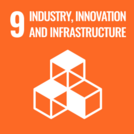
In this lesson from the World Affairs Council of Seattle - Global Classroom Program, students explore United Nations Sustainable Development Goal #9: Industries, Innovation, and Infrastructure. Students will examine readings, videos, and other online resources to learn about the use of new technologies and infrastructure projects to support sustainability. As part of these activities, students will analyze different green technologies, discuss the innovative strategies used by some communities to create sustainability and evaluate local, national, and global policies that support scientific research and innovation. In addition, students will work as a group to develop a detailed plan for the design and implementation of innovative and sustainable community development projects. This activity will allow students to apply what they have learned about SDG #9, be innovative, and use problem-solving and critical thinking skills.
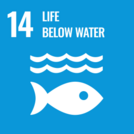
In this lesson from the World Affairs Council - Seattle, students explore United Nations Sustainable Development Goal #14: Life Below Water. Through individual and collaborative activities, they will learn the importance of conserving and sustainably using oceans, seas, and marine resources. In small groups, students will assess how proactive policies and collective action can address ocean challenges. They can choose to evaluate issues like plastic waste, warming oceans, acidification, or damaged ecosystems. Students will research various pollutants and consider how individuals and societies can support marine biodiversity. By connecting "life below water" with health, economic interests, and climate change, they will examine the work of local, national, and global organizations in waterway sustainability. This lesson will engage students in understanding the crucial role of ocean sustainability for our future
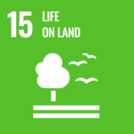
In this lesson from the World Affairs Council - Seattle, students will comprehensively understand SDG #15: Life on Land, including its key targets and significance. They will learn the importance of sustainable practices to protect and restore biodiversity, exploring how economic activities like agribusiness drive deforestation and its broader impacts. Students will examine the link between biodiversity loss and human health, understanding the interconnectedness of planetary and human health. They will discover how biotechnology and regenerative farming can combat climate change and restore ecosystems. Through critical thinking and reflection, students will identify resonant targets, propose land restoration steps, and develop a personal connection to the material. Working in small groups, they will enhance collaboration and communication skills, create a social media campaign to raise awareness, and engage in student-driven assessments. Finally, they will research local and global efforts in restoring forests and ecosystems, linking classroom learning to real-world actions, equipping them with knowledge and skills for environmental sustainability.
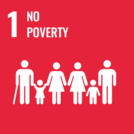
In this lesson, from the World Affairs Council of Seattle - Global Classroom Program, students learn about United Nations Sustainable Development Goal #1: No Poverty. They will watch a series of short videos that will provide an introduction to the SDGs and the no poverty goal. This specific lesson has students explore the connection between environmental issues (one of the themes of this module series) and poverty.Students will engage in small and large group activities that require them to analyze secondary sources and participate in collaborative discussions about the impact of environmental challenges, such as climate change, on poverty levels in different contexts. These learning activities include completing a graphic organizer, reflecting on the conclusions of their peers in a gallery walk, and researching efforts to alleviate poverty in a specific local, national, or global community. Finally, students will evaluate what is being done to address poverty and how they could take action individually and collectively to address the issue.

In this lesson from the World Affairs Council of Seattle - Global Classroom Program, students learn about United Nations Sustainable Development Goal #16: Peace, Justice, and Strong Institutions. Students will engage in a series of individual and collaborative learning activities that prompt them to reflect on the concepts, peace, and justice, and how they are important to creating stable and inclusive societies. Students will work in small groups to assess how societies can enhance civic engagement, representative decision-making, and protect individual and collective freedoms. Students will discuss how to leverage partnerships and cultivate relationships that result in community building. In addition, students will identify and describe the characteristics associated with the rule of law and examine specific case studies that highlight the progress and challenges nations face on this issue. Finally, students will evaluate the role of citizens and government leaders in effectively addressing social and political issues, including action steps that can be taken to support peaceful and inclusive communities.

In this lesson from the World Affairs Council of Seattle - Global Classroom Program, students explore United Nations Sustainable Development Goal #4: Quality Education. Students will learn about why access to quality education is an essential human right that promotes life-long learning opportunities. They will identify and discuss some of the barriers (economic, political, and social/cultural) faced by youth in different contexts through video clips, reading personal stories, and engaging in additional research activities. Students will examine Article #26 of the Universal Declaration of Human Rights and discuss whether they would change any part of the statement (and why). Then, students will work collaboratively to develop a proposal for achieving greater access to quality education in specific local or global communities. In this activity, students will consider what they have learned about the impact of education on people’s lives and describe how their proposal would advance efforts to reach the targets of SDG #4.
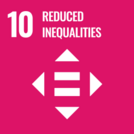
In this lesson from the World Affairs Council of Seattle - Global Classroom Program, students learn about United Nations Sustainable Development Goal #10: Reduced Inequalities. Students will engage in learning activities that include reflecting on short videos, small group discussions, and problem-solving activities. As millions of people have been displaced around the world, this lesson focuses on nations, individual communities, and international organizations that can develop collaborative solutions to address the inequalities that refugees encounter locally and globally. According to the United Nations (2022), “roughly one in five people have experienced discrimination on at least one of the grounds prohibited under international human rights law, such as ethnicity, age, sex, disability, religion, and sexual orientation.” Students will investigate how displaced populations are affected by these elements of discrimination, identify how discrimination and inequality are connected, and work together to design practical action steps to address the issue in different contexts. Overall, this lesson encourages students to think critically and creatively to reduce inequalities and provides an opportunity to bring culturally responsive teaching strategies into their pedagogy.
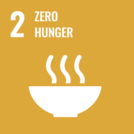
In this lesson from the World Affairs Council of Seattle - Global Classroom Program, students learn about UN Sustainable Development Goal #2: Zero Hunger. They examine the causes and consequences of food insecurity and explore solutions. Activities include KWL or Jamboard exercises, UN videos and infographics, discussions, research, and advocacy projects. These experiences help students deepen their understanding of food insecurity and its global impact, develop critical thinking, problem-solving, and collaboration skills, and connect with local organizations addressing the issue. Enrichment projects and advocacy efforts further enhance their learning and solution-generating abilities.
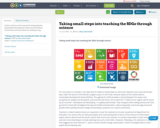
A short article on the reasons for integrating the Sustainable Development Goals into the Science Curriculum and some ideas for making it easy.